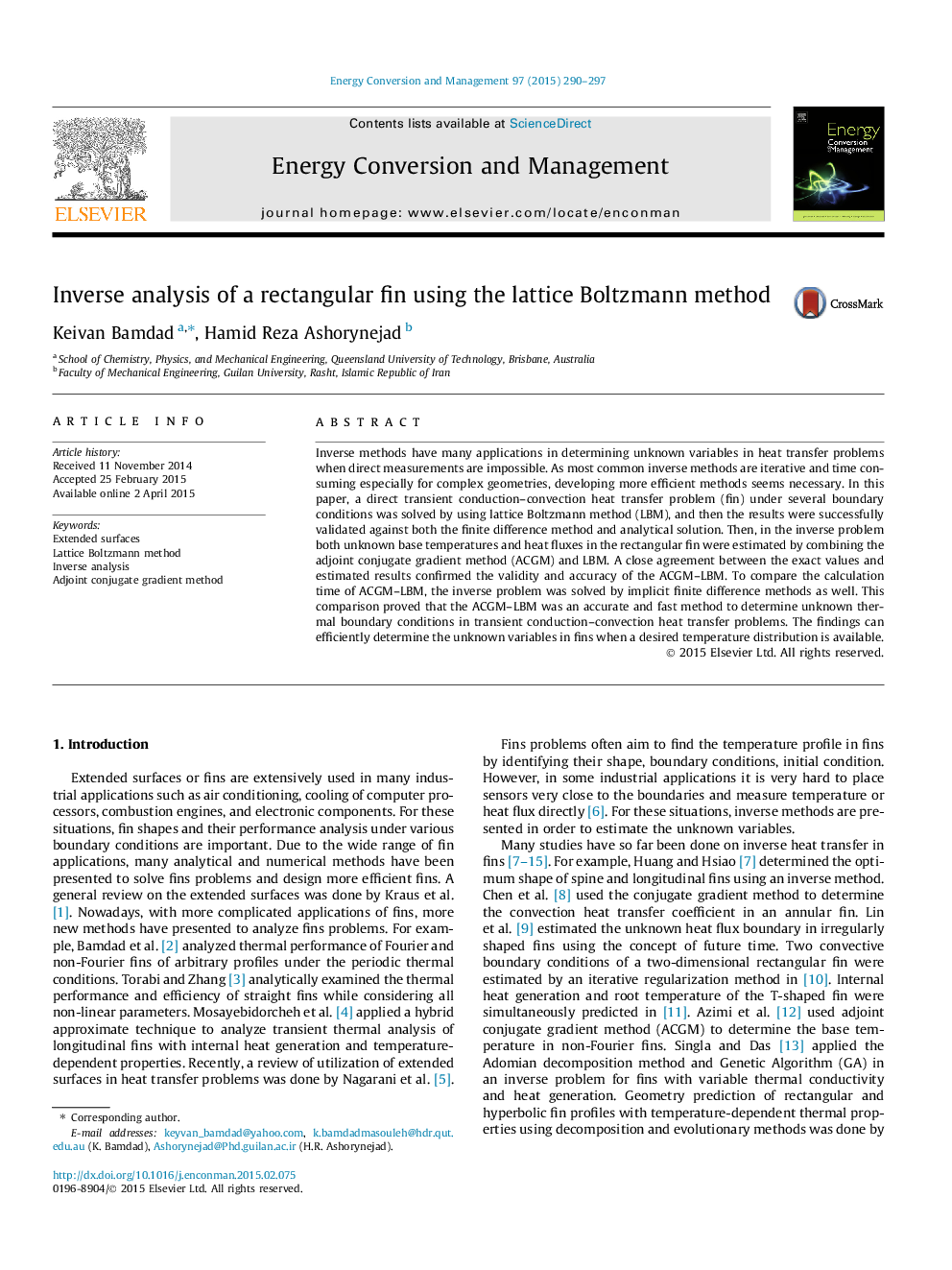| Article ID | Journal | Published Year | Pages | File Type |
|---|---|---|---|---|
| 760592 | Energy Conversion and Management | 2015 | 8 Pages |
•Lattice Boltzmann method is used to study a transient conductive-convective fin.•LBM and Conjugate Gradient Method (CGM) are used to solve an inverse problem in fins.•LBM–ACGM estimates the unknown boundary conditions of fins accurately.•The accuracy and CPU time of LBM–ACGM are compared to IFDM–ACGM.•LBM–ACGM could be a good alternative for the conventional inverse methods.
Inverse methods have many applications in determining unknown variables in heat transfer problems when direct measurements are impossible. As most common inverse methods are iterative and time consuming especially for complex geometries, developing more efficient methods seems necessary. In this paper, a direct transient conduction–convection heat transfer problem (fin) under several boundary conditions was solved by using lattice Boltzmann method (LBM), and then the results were successfully validated against both the finite difference method and analytical solution. Then, in the inverse problem both unknown base temperatures and heat fluxes in the rectangular fin were estimated by combining the adjoint conjugate gradient method (ACGM) and LBM. A close agreement between the exact values and estimated results confirmed the validity and accuracy of the ACGM–LBM. To compare the calculation time of ACGM–LBM, the inverse problem was solved by implicit finite difference methods as well. This comparison proved that the ACGM–LBM was an accurate and fast method to determine unknown thermal boundary conditions in transient conduction–convection heat transfer problems. The findings can efficiently determine the unknown variables in fins when a desired temperature distribution is available.
